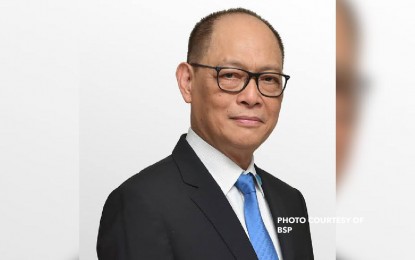
BSP Governor Benjamin Diokno
MANILA – Bangko Sentral ng Pilipinas (BSP) Governor Benjamin Diokno remains confident of within-target inflation this year after rate of price increases accelerated for the second consecutive month last July to 2.7 percent from month-ago’s 2.5 percent.
Average inflation rate in the first seven months this year stood at 2.5 percent, at the lower half of the government’s 2 to 4-percent target band for this year until 2022.
Core inflation, which excludes volatile food and oil, posted a faster rate of 3.3 percent from last June’s 3 percent, bringing the average to date to 3.1 percent.
In a Viber message to journalists Wednesday, Diokno said the inflation rate last July is within the central bank’s 2.2 to 3-percent projection range.
“The latest inflation outturn is consistent with the BSP’s prevailing assessment that inflation is expected to remain benign over the policy horizon due largely to the potential adverse impact of Covid-19 (coronavirus disease 2019) on the domestic and global economic prospects,” he said.
The Philippine Statistics Authority (PSA) attributed the inflation uptick last July to faster inflation rate of the transport index, along with the jumps in the alcoholic beverages and tobacco index; the housing, water, electricity, gas and other fuels index; and the restaurant and miscellaneous goods and services index.
Diokno said monetary authorities’ latest baseline inflation forecasts show that average inflation rate this year until 2022 will likely end at the mid-point of the target band.
“The contraction in domestic economic activity is seen to have bottomed out in Q2 (second quarter) 2020,” he said.
Diokno, however, declined to give any figures.
“For the rest of (the) year, output is expected to decline at a slower pace as firms and households gradually adjust to post-pandemic conditions. GDP growth is expected to recover in 2021 as government policy support measures fully gain traction,” he said.
Growth, as measured by gross domestic product (GDP), contracted by 0.2 percent in the first three months of the year due partly to the impact of the enhanced community quarantine (ECQ) in mainland Luzon from March 17 until May 15.
The ECQ was extended until end-May for the National Capital Region (NCR).
Luzon accounts for about 70 percent of the country’s annual output and the ECQ, implemented to contain the rise of Covid-19 infections, hampered economic activities.
Local governments in the Visayas and Mindanao also implemented their respective movement restrictions around the same time Luzon was placed under ECQ to address Covid-19’s spread.
As a result of the economic contraction in the first quarter this year, economic managers revised their growth forecast for this year to a contraction of 2 to 3.4 percent. The 2021 growth is, however, seen to rise to between 8 to 9 percent.
Diokno said the central bank’s policy-making “Monetary Board will consider the latest inflation outlook along with the release of Q2 2020 GDP at the upcoming monetary policy meeting on 20 August 2020.”
“The BSP remains ready to deploy all available measures in its toolkit in fulfillment of its policy mandate as it continues to assess the impact of the global health crisis on the domestic economy,” he added.
The Monetary Board has, among others, reduced the BSP’s key policy rates by a total of 175 basis points since the start of the year to help buoy the domestic economy.
It has also cut universal and commercial banks (U/KBs) reserve requirements by 200 basis points and slashed rural banks and cooperative banks’ (RCBs) reserve requirements by 100 basis points to support lending to micro, small and medium enterprises. (PNA)
